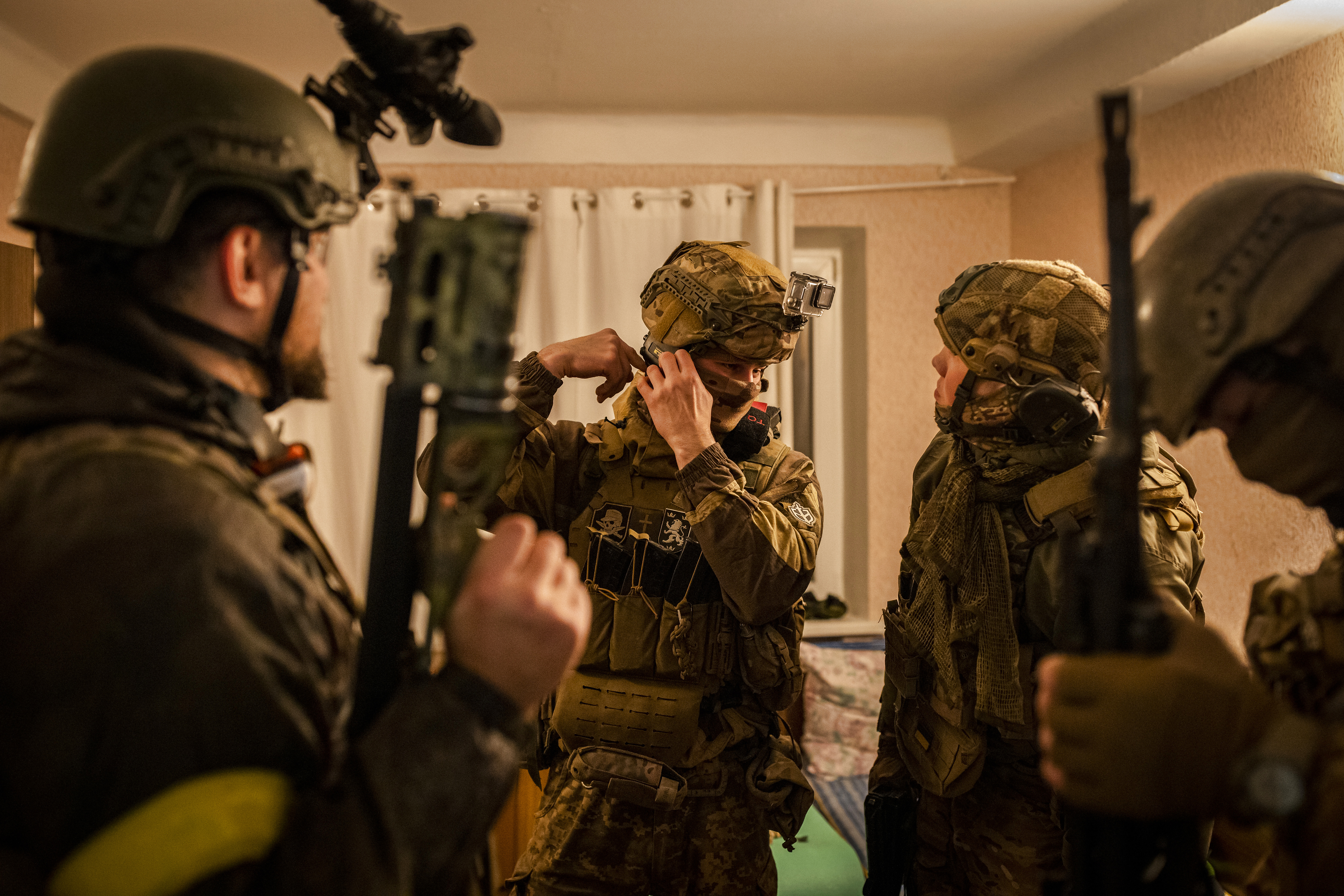
views
In the past year, as Russia launched its invasion of Ukraine, the Ukrainian government and its NATO allies shared three seemingly harmless photographs on their social media accounts. However, these photos were later removed without explanation. The pictures depicted a soldier standing among a group, another soldier resting in a trench, and an emergency worker posing in front of a truck. What caught attention in these photographs were the patches worn by the Ukrainian personnel. These patches featured symbols that were infamous during Nazi Germany’s reign and have since been adopted by various far-right hate groups, as per a report by the New York Times.
Why are Nazi symbols seen on Ukraine’s frontlines and what does this mean for the war? News18 explains:
‘A Complicated Relationship’
According to the report by Thomas Gibbons-Neff, the sharing and subsequent deletion of these photographs shed light on the complex relationship between the Ukrainian military and Nazi imagery. This relationship stems from the historical context of Ukraine being under both Soviet and German occupation during World War II.
Consequently, symbols associated with Nazi Germany have become intertwined with the country’s past, raising questions and concerns about the Ukrainian military’s engagement with this controversial iconography, the report explains.
The delicate nature of this relationship has been further intensified due to Russian President Vladimir V. Putin’s claim that Ukraine is a Nazi state, which he has used to justify his invasion of Ukraine.
Over the years, Ukraine has actively worked through legislation and military reforms to address and contain the influence of fringe far-right movements within its society, Gibbons-Neff explains. These movements often embrace symbols with Nazi historical significance and promote hostile views towards leftists, LGBTQ+ movements, and ethnic minorities. However, it is important to note that not all Ukrainian military personnel or citizens align themselves with these extremist ideologies.

In the fight against Russian aggression, some individuals from these far-right groups have joined the broader Ukrainian military structure after Russia’s illegal annexation of Crimea in 2014, the report says. Some of these fighters are even regarded as national heroes for their dedication to defending Ukraine.
What are the Symbols in Question?
The iconography associated with these far-right groups includes various symbols, such as the skull-and-crossbones patch worn by concentration camp guards and a symbol called the Black Sun. These symbols have started to appear more frequently on the uniforms of soldiers actively engaged in frontline combat. It is important to note that some of these soldiers claim that the use of such imagery is intended to represent Ukrainian sovereignty and pride rather than promoting Nazism, as per the report.
What is the Black Sun Symbol?
The Black Sun, also known as the Schwarze Sonne in German, is a specific type of symbol known as a sun wheel or Sonnenrad. It originated in Nazi Germany and was later adopted by neo-Nazi groups and other far-right individuals and organizations. The design of the symbol features twelve radial sig runes, which bear resemblance to the symbols used by the SS in their logo.
The Black Sun symbol gained prominence during its association with the SS, the paramilitary organization under the leadership of Heinrich Himmler. Himmler extensively remodeled and expanded a castle called Wewelsburg with the intention of making it the central hub for the SS. The symbol was incorporated into the architectural elements of the castle, further solidifying its significance within the Nazi regime.
Since then, the Black Sun symbol has continued to be used by neo-Nazi groups and far-right extremists, who adopt it as a representation of their ideological beliefs.
What Does This Issue Mean?
This complexity highlights the blurred lines and conflicting narratives surrounding the appropriation of certain symbols in Ukraine’s military context. The presence of these symbols among soldiers fighting on the front line underscores the ongoing challenge of reconciling historical associations with contemporary expressions of patriotism and identity.
In the short term, the presence of these controversial symbols in Ukraine’s military has the potential to strengthen President Putin’s propaganda and provide ammunition for his claims that Ukraine needs to undergo a process of “de-Nazification.” This claim completely disregards the fact that Ukraine’s President, Volodymyr Zelensky, is Jewish. On a broader scale, Ukraine’s mixed feelings towards these symbols, and at times even their acceptance of them, runs the risk of reviving and mainstreaming icons that the Western world has been striving to eradicate for over half a century, the report explains.
The concern lies in the fact that leaders in Ukraine, whether due to a lack of understanding or a deliberate choice, fail to acknowledge how these symbols are perceived outside of their country. This oversight worries experts who study the international far right, such as Michael Colborne from the investigative group Bellingcat. He emphasizes the importance of Ukrainians realizing that these images undermine support for their country and its reputation on the global stage.
The New York Times contributed to this report.

















Comments
0 comment